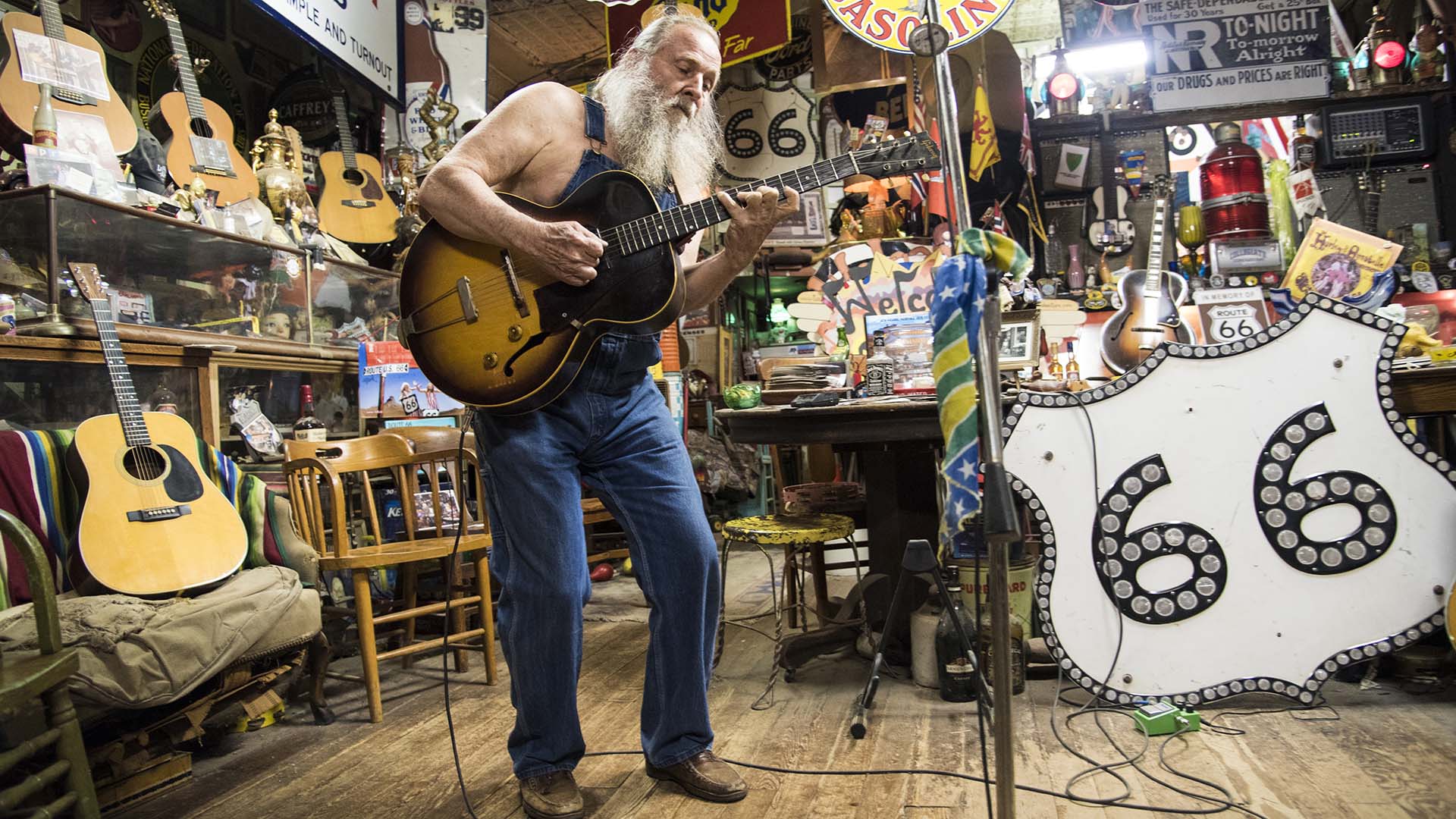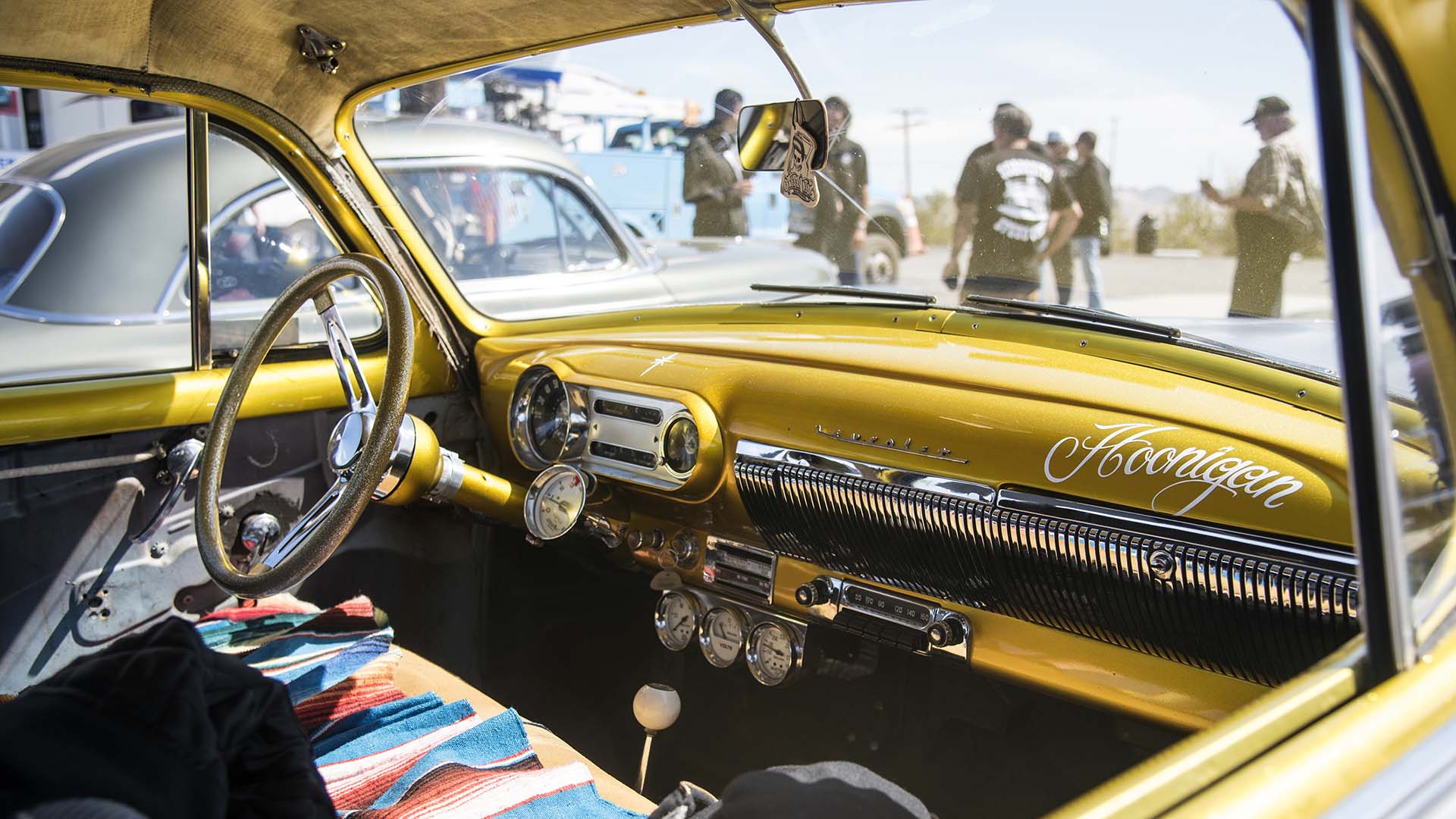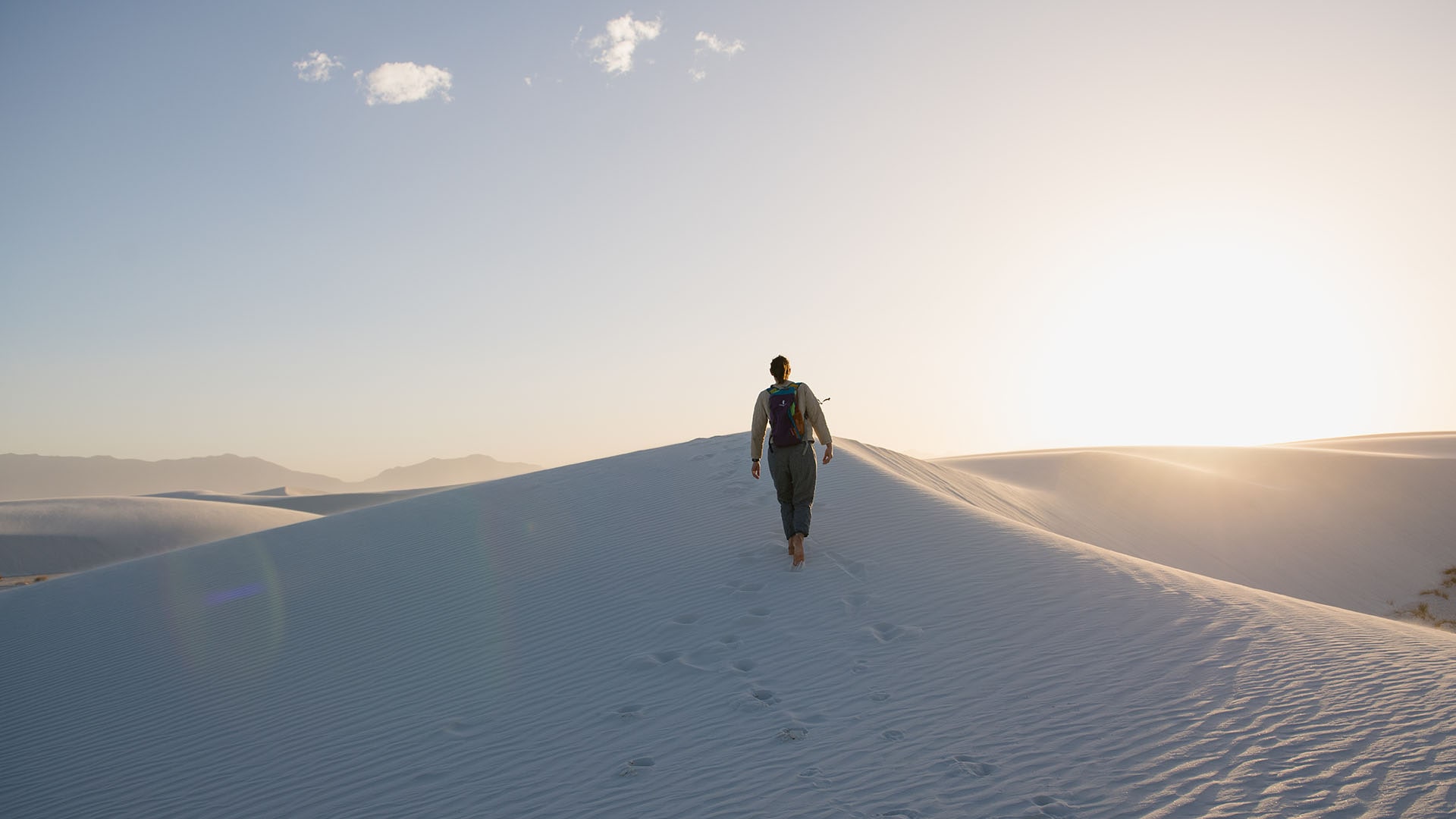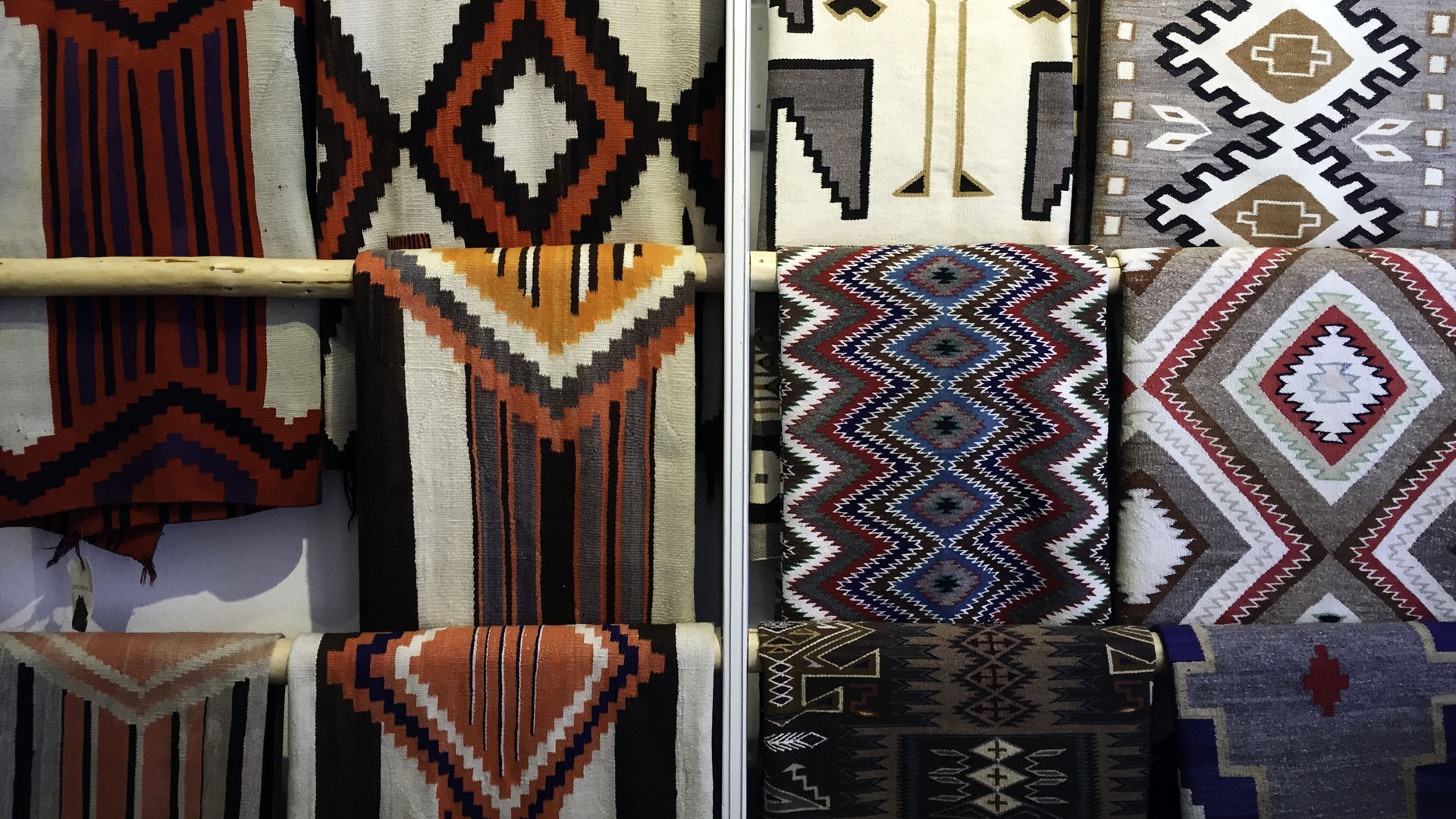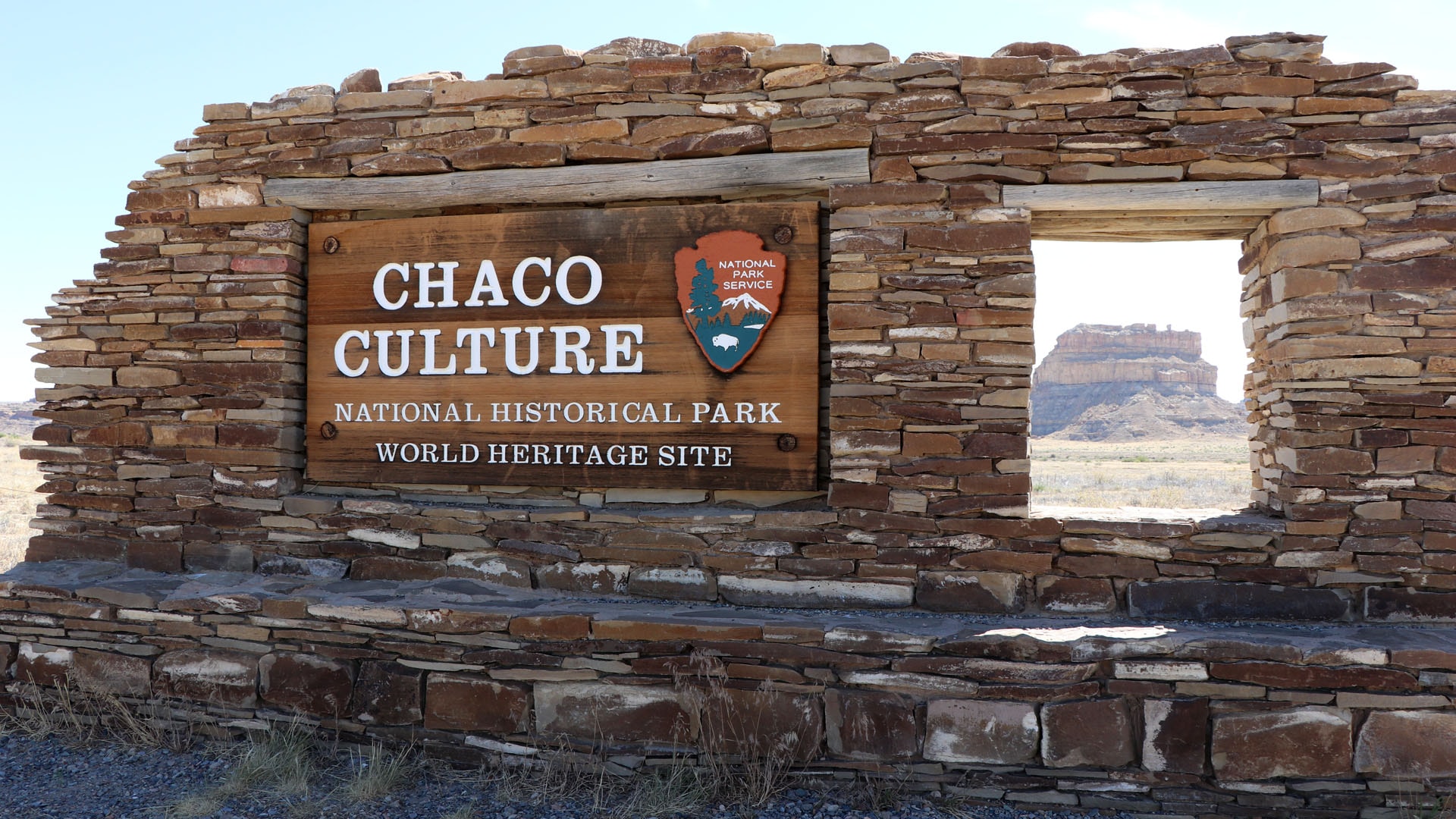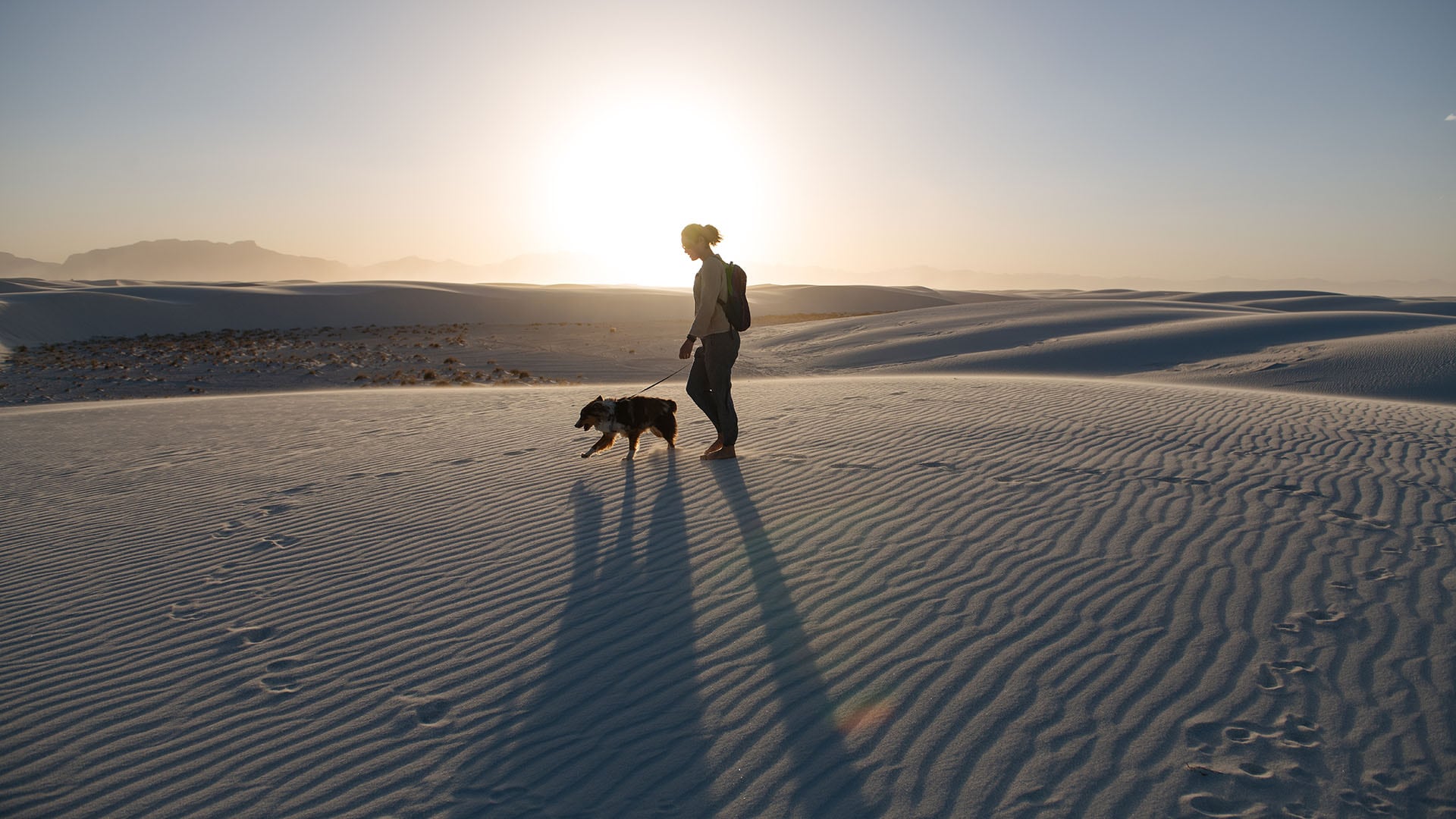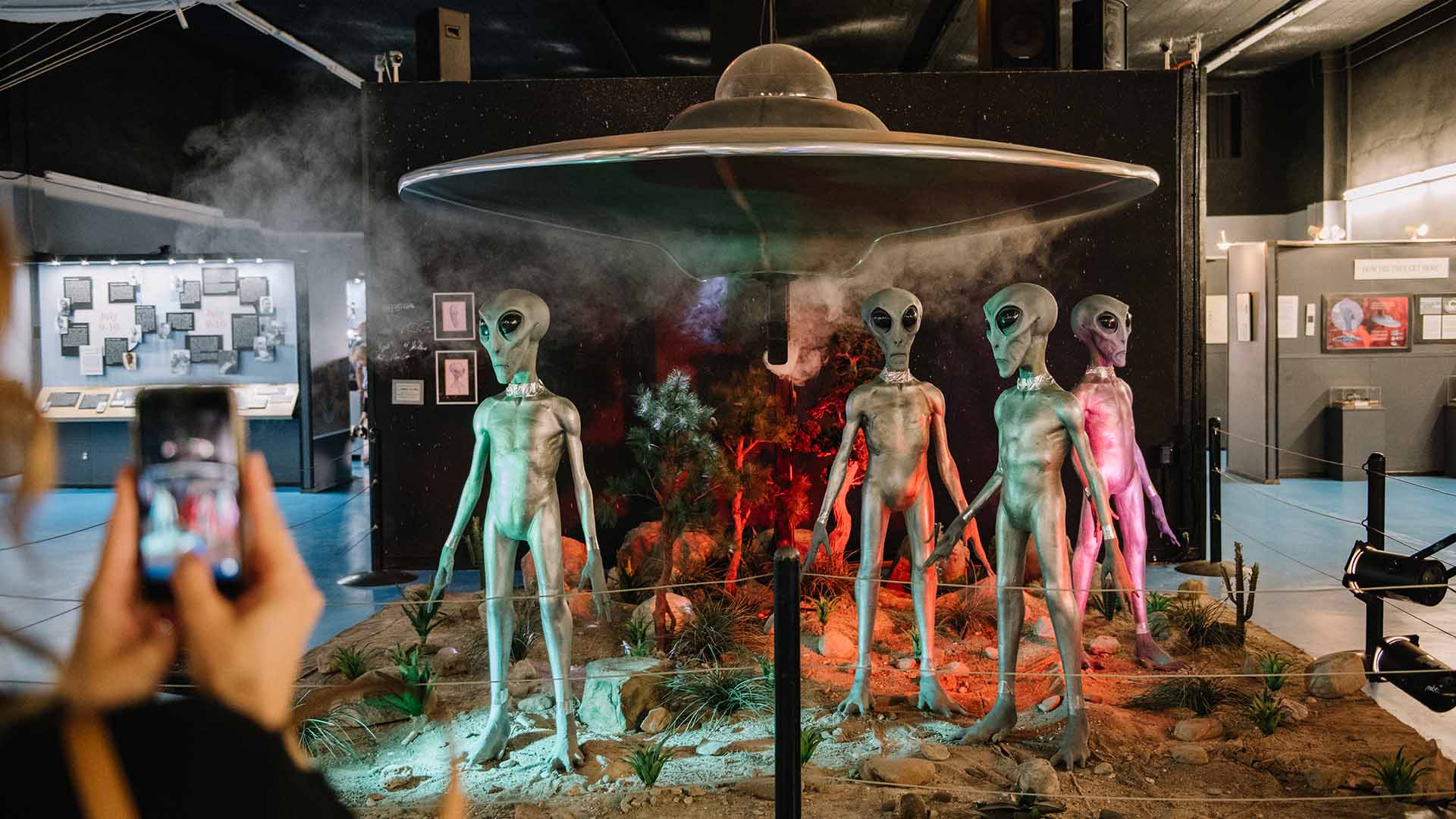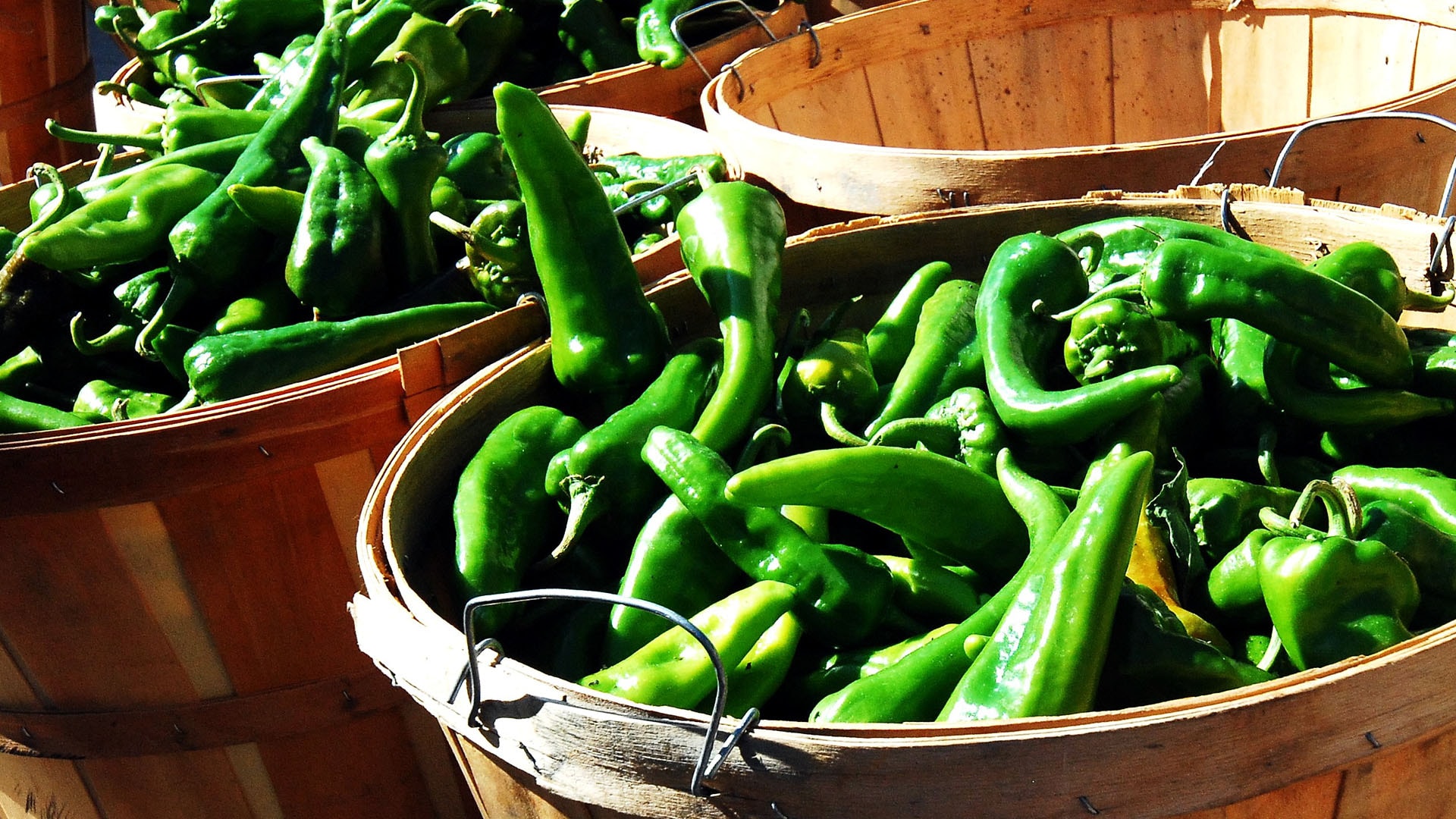Chaco Canyon: Center of an Ancient Culture
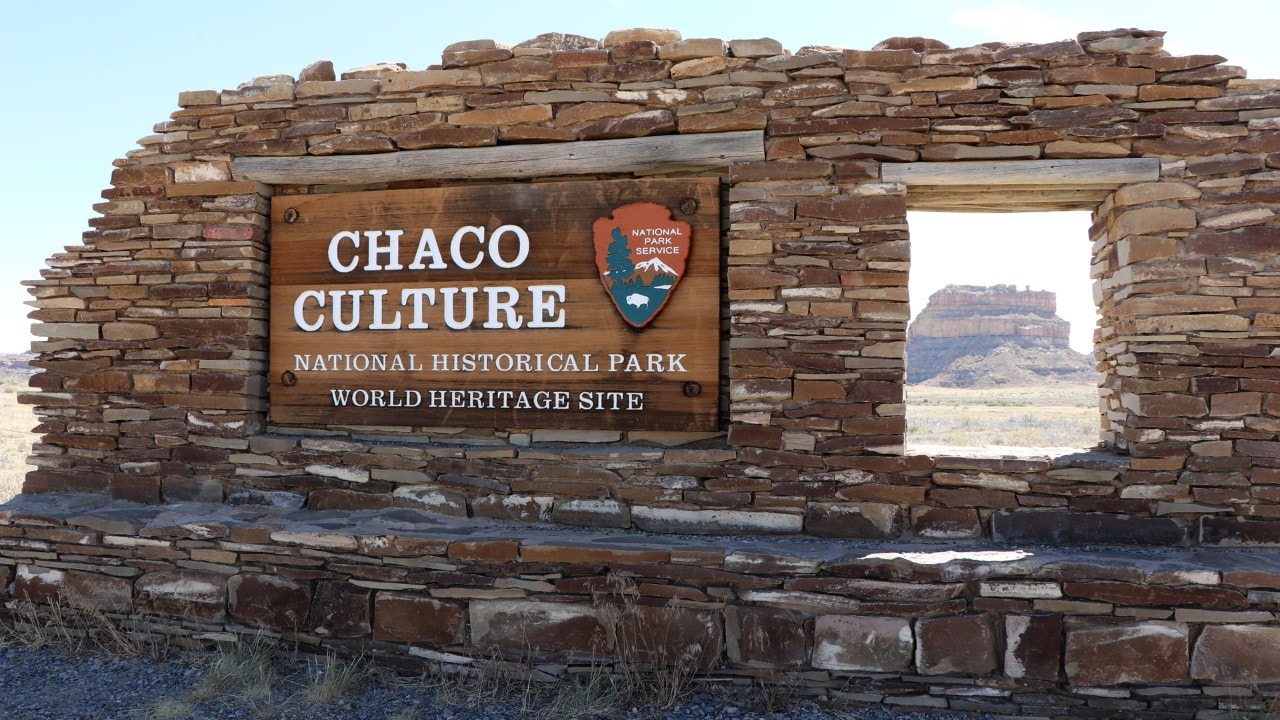
The Chaco Canyon National Historical Park is in a remote area of northwest New Mexico.
Story and photos by Tom Uhlenbrock
Tom is an award-winning travel writer and journalist based in St. Louis.
Preserved ruins in New Mexico hint at what life was like hundreds of years ago.
Why did they leave? Where did they go?
Some 1,000 years ago, native peoples lived in communities in the area referred to today as the Four Corners because it is where Arizona, Utah, Colorado and New Mexico meet.
They were excellent masons who built pueblos, the Spanish word for “villages,” of multistory adobe buildings, including cliff dwellings perched high up in the alcoves of the red-rock canyons. The ruins of those buildings are preserved in national parks and monuments like Mesa Verde and Canyon de Chelly.
Initially called the Anasazi, the builders now are referred to as the Ancestral Puebloan people. Their ceremonial, social, political and trading center for more than 300 years was in northwest New Mexico, where some 15 major complexes were built along 9 miles of a desert canyon. All are preserved today by the National Park Service as the Chaco Culture National Historical Park, which is a World Heritage Site.
The heart of the Chaco Canyon community, which thrived from A.D. 850 to 1150, is Pueblo Bonito, a great house where clans from throughout the Four Corners would stop and stay during their sacred migrations.
Pueblo Bonito, which means “beautiful town” in Spanish, had about 650 rooms in four stories, two major plazas and several subterranean ceremonial chambers called kivas. Researchers estimate up to 100 people lived in the pueblo year-round, and up to 6,000 inhabited all the villages of Chaco Canyon.
The complexes were aligned to capture the solar and lunar cycles and were linked by an extensive system of roads 30-feet wide. The inhabitants dug irrigation canals and harvested trees from mountains 70 miles away.
Excavations unearthed turquoise beads and pendants, conch-shell trumpets, painted flutes, macaws and beautiful black-and-white pottery.
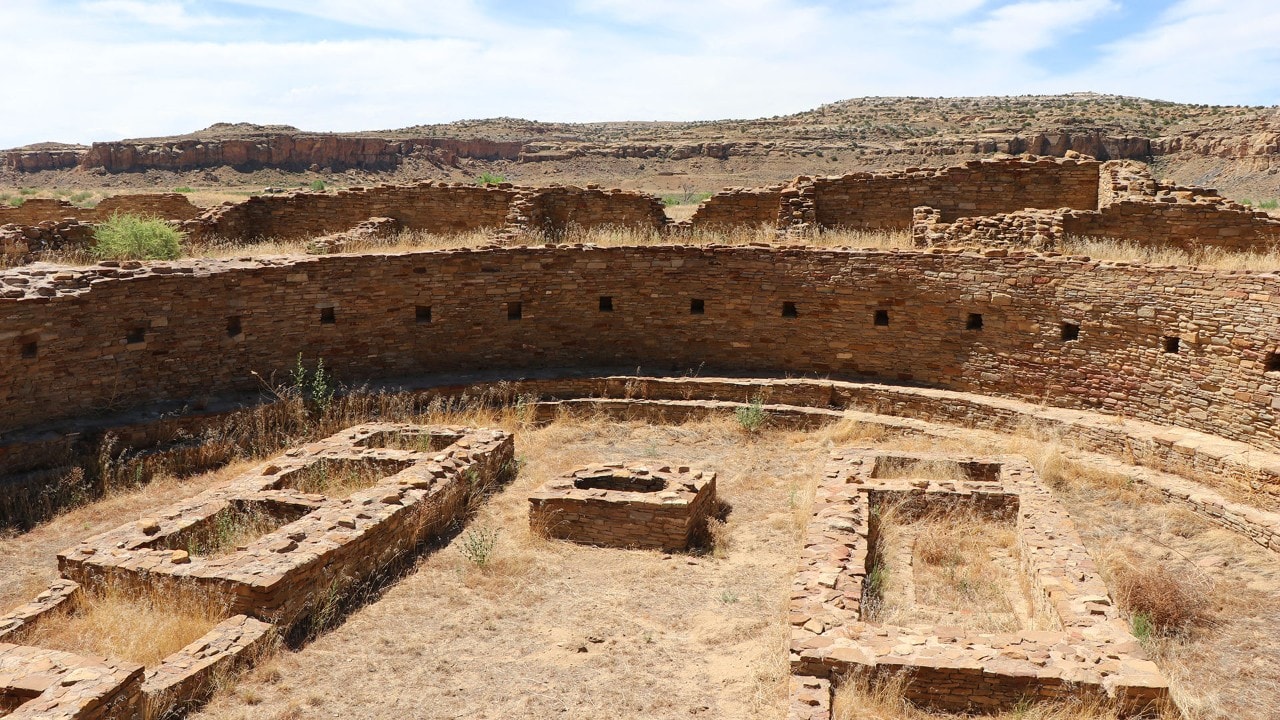
The complexes at Chaco Canyon include circular subterranean ceremonial chambers called kivas.
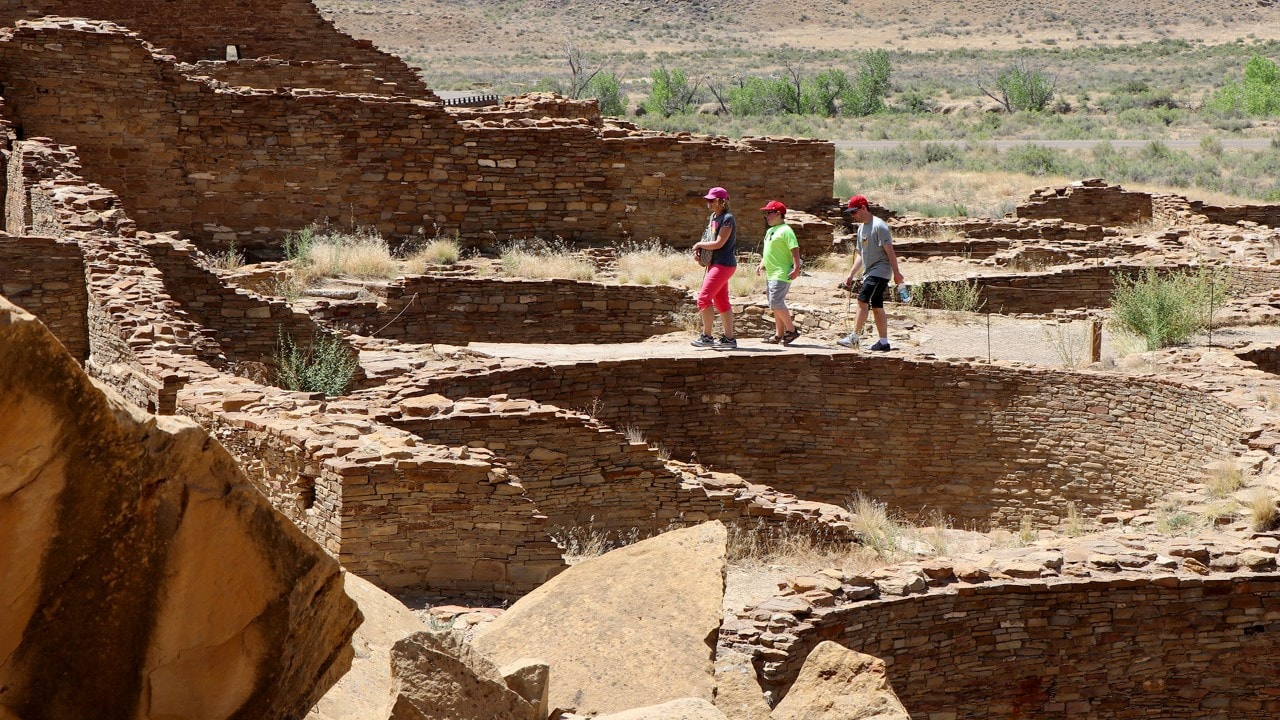
Visitors follow designated paths that lead into the ruins.
Visiting Chaco Canyon today requires a 20-mile drive through high desert backcountry. Despite its remote location, the park was busy on a recent weekday. The visitor center features exhibits that explain the canyon’s ancient past and trail guides to explore Pueblo Bonito and the other sites.
The walls of Pueblo Bonito can be seen from the blacktop road that winds through the historical park. A gravel trail allows visitors to enter the pueblo and admire the distinctive masonry of quarried stones shaped and set in mortar. The wood ceilings are long gone, but the windows, doors, plazas and kivas give a feeling for what life there was like.
Chaco Canyon and communities throughout the Southwest were abandoned by A.D. 1300, perhaps because of drought, depleted natural resources or warfare. The people from Chaco are believed to have migrated to join the Hopi, Zuni, Acoma, Zia, Laguna and other pueblo peoples living along the Rio Grande.
Members of those tribes return to Chaco Canyon annually to honor their ancestors. As the trail guide advises visitors: “This is a sacred area. Enter with respect.”
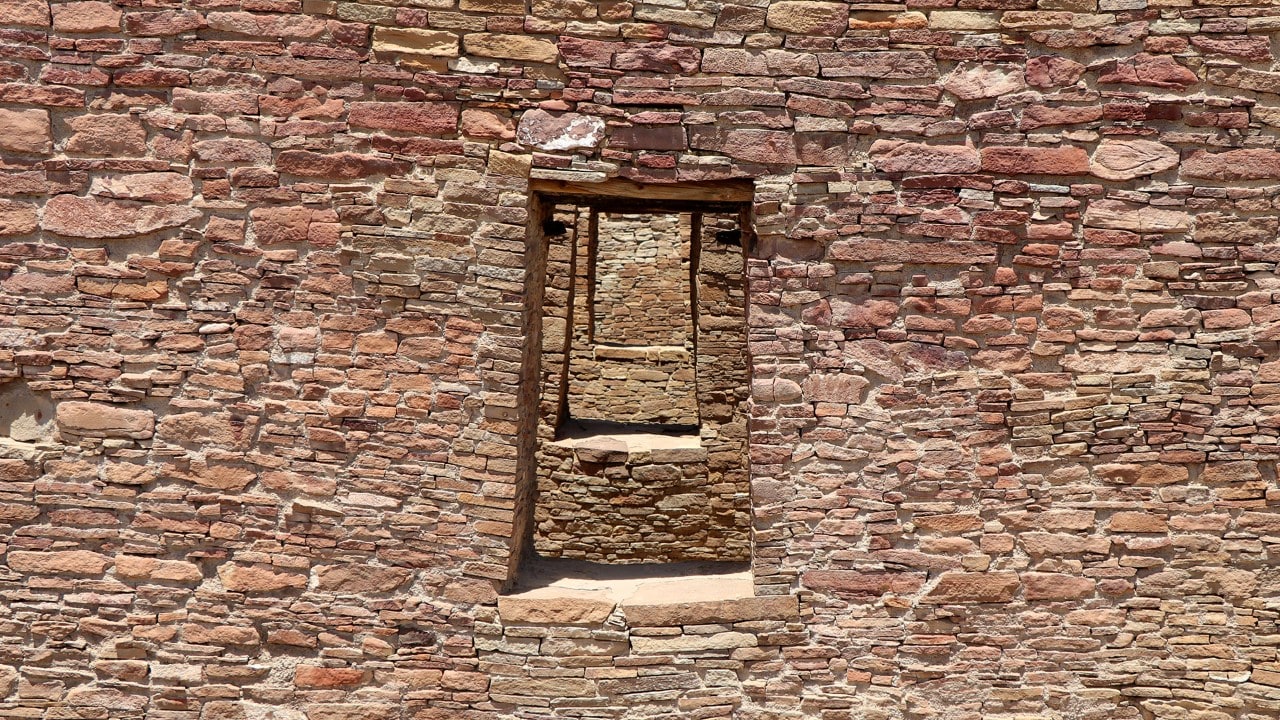
The windows and doors are aligned within the stone walls
Related
Read more stories about New Mexico.
- Nostalgic Route 66 Road Trip: Albuquerque to St. Louis
- Nostalgic Route 66 Road Trip: Santa Monica to Albuquerque
- New Mexico Casts an Enchanting Spell on a Road Trip Adventure
- Vintage Shopping in New Mexico
- Road Trip to Chaco Canyon
- Road Trip to White Sands National Park
- Road Trip to Roswell, New Mexico
- New Mexico Trips
- Chile Peppers in New Mexico: Red or Green

